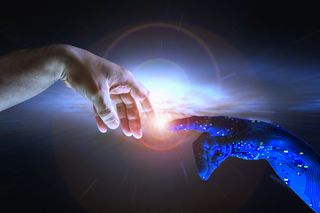
Artificial Intelligence and machine learning have disrupted human activity since its inception in the 1960s. Today, we depend on intelligent machines to perform highly sophisticated and specific tasks without explicit human input. Rather, they rely on patterns and inferences instead. AI algorithms have been used in a wide variety of applications, from email filtering and computer vision to the disruption of the retail, travel and finance industries.
An ancient sector of our economy, and one that has largely remained unchanged; education- has yet to realise the full implications of artificial intelligence within its operations. Until recently, university students are taught via a ‘one module fits all’ structure, within the confines of a classroom, with very little personal and individually constructed development procedures.
Resultantly, our current model of higher education has produced, on the whole, an unspecialised and underutilised workforce. Such a workforce entering into an increasingly digital world economy or artificial intelligence and machine learning has been somewhat incompatible.
It’s only a matter of time before artificial intelligence creeps into the realms of higher education and transforms the way we teach, learn, work and live. In fact, AI has been applied to the functioning of some educational establishments in an effort to provide opportunities for professional development in an increasingly digitised world.
University 20.35 pioneers an entirely new university model, where each student at any given moment makes a decision based on recommendations that take into account his or her digital footprint, that of other students, and the educational content that’s available to them. Such recommendations include; the choice of professional development, the skills necessary for the profession, a selection of courses, events and activities that will help to secure the student's professional development.
Artificial intelligence solutions
Each student's digital footprint can be collected during education processes to confirm the student's skills. From here, gaps in knowledge are detected and it confirms that a trajectory module tutor is able to efficiently transfer skills to students. This transfer is based on the students' existing skills analysis, educational background and habits. Essentially, it holds the capacity for impeccable efficiency gains.
The collection of Big Data and its analysis of students’ professional and educational allows the university to tailor the education path to the student.
These AI modified educational processes have the capacity to generate what would be the students ‘digital twin’. In many ways, our digital twin already exists. The social media we use are all collecting parts of ‘our self’, likewise; governments, healthcare systems and retail companies are too collecting fragments of us.
Whether it’s data on our shopping preferences, or data representing our skills as employees. The education system, at the very least, can collect records in what we have learnt.
An educational digital twin is the replica of the students own physical profile, this almost real-time digital replica of the student's progress can illustrate student’s skills and knowledge. It can also be modelled to take into account the things we forget, and the skills we are practising. It is this information of our fluctuating (diminishing & strengthening) knowledge, that can be a starting point for an intelligent, proactive educational program.
In other words, AI technology should allow us to aggregate those fragments of ourselves into a more comprehensive one that better represents us. It’s worth noting for clarification that through our searches, Google has come to know us quite well. So, it has a fairly good representation of our interests - which to some extent reflects who we are. Based on these reflections, Google often recommends content, news, stories and websites that might interest you further.
Transforming higher education
Artificial intelligence has the capacity to introduce personalised learning to the extraordinarily generic syllabus that exists today. AI gives students personal development pathways based on their digital footprint. In other words, AI can more accurately than humans, draw out the students skills and capabilities, which should be developed and enhanced. As a result of this model of learning, the future of the digital economy can anticipate a more refined and expert workforce.
As educational AI develops, students are going to be able to study where and when they want, using whichever system/platform that suits them. This is likely to result in tablets, mobile devices and other personal devices becoming the main delivery modes of education. The traditional classroom setups are forecast to move towards a more interactive style of working. Subsequently, this will contribute to the gathering and circulating of big data. As such, the use of AI in monitoring students digital footprint to aid personalised study programs will reach new levels of proficiency.
Collaboration on the blockchain
Another dimension of using AI innovations in universities will be implementing the use of blockchain technology. This will revolutionise the way universities operate and will welcome institutions to share and collaborate with each other securely.
The international digital ecosystem heavily depends on the inclusion of universities contributing to the building and maintenance of that system. Through developing sound data-driven management, constant renewal of the educational program’s core based on students’ reactions, digitalisation of the environment that requires new skills, and fruitful collaboration across universities.
Reviving the standard of higher education
In the 1960s and 1970s, pursuing higher education was a minority choice. By 2018, more than 2.3 million students had enrolled at higher education institutions in the UK alone. As with the changing demographics of university students, the economy has changed drastically too. A saturated workforce and an economy making continuous digital progress has the potential to thrive- but only with specialised and proficient personnel.
The education process using artificial intelligence is expected to produce a different calibre of skilled students, thus reinstating institution credibility. The number of university students can therefore increase, whilst simultaneously producing a higher number of specialised graduates.


No comments:
Post a Comment